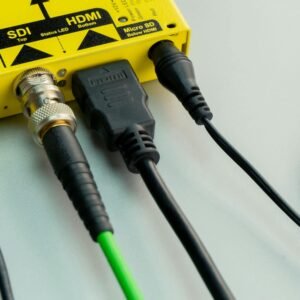Introduction
In today’s fast-paced world, where convenience and portability are paramount, the “cool box” has emerged as an indispensable companion for those who seek to keep their food and beverages cool on the go. Whether you’re embarking on a camping adventure, a road trip, or simply enjoying a picnic in the park, a cool box offers a reliable and efficient way to maintain the freshness and quality of your perishables.
What is a Cool Box?
A cool box, also known as a portable refrigerator or cooler, is a thermally insulated container designed to keep contents cool or frozen. It typically operates using either electricity, gas, or a combination of both. The insulation material, usually made of polyurethane or foam, helps to minimize heat transfer between the interior and the exterior, thereby preserving the temperature of the contents.
Types of Cool Boxes
There are several types of cool boxes available, each with its own unique features and benefits:
- Electric Cool Boxes: These cool boxes are powered by electricity and can be plugged into a power outlet or a car’s 12V DC socket. They offer the most consistent cooling performance and are ideal for extended trips or camping.
- Gas Cool Boxes: These cool boxes use propane or butane gas as a fuel source. They are highly portable and can be used in remote locations where electricity is unavailable.
- Combination Cool Boxes: These cool boxes can operate on both electricity and gas, providing flexibility and convenience in various situations.
- Solar-Powered Cool Boxes: These cool boxes utilize solar panels to generate electricity, making them a sustainable and eco-friendly option. They are particularly suitable for outdoor activities where access to traditional power sources is limited.
- Absorption Cool Boxes: These cool boxes use a chemical reaction to produce cooling. They are typically powered by gas or electricity and offer a quiet and vibration-free operation.
Factors to Consider When Choosing a Cool Box
- Capacity: Choose a cool box that can accommodate the amount of food and beverages you need to store. Larger models are ideal for families or groups, while smaller ones are suitable for individuals or couples.
- Cooling Power: The cooling power of a cool box determines how quickly it can lower the temperature and maintain it. Look for a model with a cooling capacity that suits your specific needs.
- Portability: If you plan to transport the cool box frequently, consider its weight, size, and handle design for easy carrying.
- Power Source: Determine whether you need an electric, gas, or combination cool box based on your intended use and the availability of power sources.
- Features: Some cool boxes offer additional features like built-in compartments, wheels, or USB charging ports. Consider which features are important to you.
Tips for Using a Cool Box Effectively
- Pre-cool the box: Before loading the cool box portability, pre-cool it by running it on its maximum setting for several hours.
- Organize contents: Arrange items in the cool box so that cold air can circulate freely. Place frozen items at the top to help maintain the temperature of the contents below.
- Limit openings: Minimize the number of times you open the cool box to prevent warm air from entering and raising the temperature.
- Insulate the exterior: If using a gas cool box, consider insulating the exterior to help retain heat and improve efficiency.
- Clean regularly: Clean the interior of the cool box regularly to prevent odor and bacteria growth.
FAQS
What factors should I consider when choosing a cool box?
When selecting a cool box, it’s essential to consider the following factors:
- Capacity: Choose a cool box that can accommodate the amount of food and beverages you need to store. Larger models are ideal for families or groups, while smaller ones are suitable for individuals or couples.
- Cooling Power: The cooling power of a cool box determines how quickly it can lower the temperature and maintain it. Look for a model with a cooling capacity that suits your specific needs.
- Portability: If you plan to transport the cool box frequently, consider its weight, size, and handle design for easy carrying.
- Power Source: Determine whether you need an electric, gas, or combination cool box based on your intended use and the availability of power sources.
- Features: Some cool boxes offer additional features like built-in compartments, wheels, or USB charging ports. Consider which features are important to you.
How do I use a cool box effectively?
To use a cool box effectively, follow these tips:
- Pre-cool the box: Before loading the cool box, pre-cool it by running it on its maximum setting for several hours.
- Organize contents: Arrange items in the cool box so that cold air can circulate freely. Place frozen items at the top to help maintain the temperature of the contents below.
- Limit openings: Minimize the number of times you open the cool box to prevent warm air from entering and raising the temperature.
- Insulate the exterior: If using a gas cool box, consider insulating the exterior to help retain heat and improve efficiency.
- Clean regularly: Clean the interior of the cool box regularly to prevent odor and bacteria growth.
Can I use a cool box to freeze food?
Most cool boxes can maintain a temperature of around 0°C, which is ideal for keeping food and beverages cool. However, they may not be able to freeze food as effectively as a traditional freezer. If you need to freeze food, consider using a cool box with a built-in freezer compartment or a separate freezer pack.
Conclusion
A cool box is a valuable asset for portability anyone who enjoys outdoor activities or needs to keep food and beverages cool on the go. By carefully considering the factors outlined above and following the tips for effective use, you can select the perfect cool box to meet your specific needs and enjoy the benefits of fresh and cold refreshments wherever your adventures take you.
To read more, click here.





